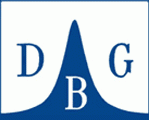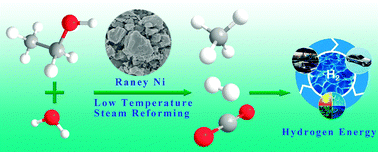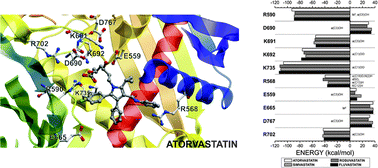Top 25 most-read PCCP articles for 2011
Density functional theory for transition metals and transition metal chemistry
Christopher J. Cramer and Donald G. Truhlar
DOI: 10.1039/B907148B
Density functional theory for transition metals and transition metal chemistry
Titania supported gold nanoparticles as photocatalyst
Ana Primo, Avelino Corma and Hermenegildo García
DOI: 10.1039/C0CP00917B
Colloidal metal nanoparticles as a component of designed catalyst
Chun-Jiang Jia and Ferdi Schüth
DOI: 10.1039/C0CP02680H
Studying disorder in graphite-based systems by Raman spectroscopy
M. A. Pimenta, G. Dresselhaus, M. S. Dresselhaus, L. G. Cançado, A. Jorio and R. Saito
DOI: 10.1039/B613962K
Layer-by-layer assembly as a versatile bottom-up nanofabrication technique for exploratory research and realistic application
Katsuhiko Ariga, Jonathan P. Hill and Qingmin Ji
DOI: 10.1039/B700410A
Air and water stable ionic liquids in physical chemistry
Frank Endres and Sherif Zein El Abedin
DOI: 10.1039/B600519P
Carbon materials for supercapacitor application
Elzbieta Frackowiak
DOI: 10.1039/B618139M
Characterization of nanostructured hybrid and organic solar cells by impedance spectroscopy
Francisco Fabregat-Santiago, Germà Garcia-Belmonte, Iván Mora-Seró and Juan Bisquert
DOI: 10.1039/C0CP02249G
Catalysis by metal–organic frameworks: fundamentals and opportunities
Marco Ranocchiari and Jeroen Anton van Bokhoven
DOI: 10.1039/C0CP02394A
A thorough benchmark of density functional methods for general main group thermochemistry, kinetics, and noncovalent interactions
Lars Goerigk and Stefan Grimme
DOI: 10.1039/C0CP02984J
Graphene-based electrochemical energy conversion and storage: fuel cells, supercapacitors and lithium ion batteries
Junbo Hou, Yuyan Shao, Michael W. Ellis, Robert B. Moore and Baolian Yi
DOI: 10.1039/C1CP21915D
Bimetallic Pt–Au nanocatalysts electrochemically deposited on graphene and their electrocatalytic characteristics towards oxygen reduction and methanol oxidation
Yaojuan Hu, Hua Zhang, Ping Wu, Hui Zhang, Bo Zhou and Chenxin Cai
DOI: 10.1039/C0CP01998D
Recent progress in SERS biosensing
Kyle C. Bantz, Audrey F. Meyer, Nathan J. Wittenberg, Hyungsoon Im, Özge Kurtuluş, Si Hoon Lee, Nathan C. Lindquist, Sang-Hyun Oh and Christy L. Haynes
DOI: 10.1039/C0CP01841D
Fullerene derivative acceptors for high performance polymer solar cells
Youjun He and Yongfang Li
DOI: 10.1039/C0CP01178A
Molecular states of water in room temperature ionic liquids
L. Cammarata, S. G. Kazarian, P. A. Salter and T. Welton
DOI: 10.1039/B106900D
Sandwich-type functionalized graphene sheet-sulfur nanocomposite for rechargeable lithium batteries
Yuliang Cao, Xiaolin Li, Ilhan A. Aksay, John Lemmon, Zimin Nie, Zhenguo Yang and Jun Liu
DOI: 10.1039/C0CP02477E
Nanostructured polymer assemblies formed at interfaces: applications from immobilization and encapsulation to stimuli-responsive release
Yajun Wang, Leticia Hosta-Rigau, Hannah Lomas and Frank Caruso
DOI: 10.1039/C0CP02287J
Formation of chains of graphitic nanoparticles by heating fullerene blacks covered with thin metal films
H. Kanzow, A. Ding, J. Nissen, H. Sauer, T. Belz and R. Schlögl
DOI: 10.1039/B002735I
Fe3O4 nanoparticle-integrated graphene sheets for high-performance half and full lithium ion cells
Liwen Ji, Zhongkui Tan, Tevye R. Kuykendall, Shaul Aloni, Shidi Xun, Eric Lin, Vincent Battaglia and Yuegang Zhang
DOI: 10.1039/C1CP20455F
New nanostructured heterogeneous catalysts with increased selectivity and stability
Ilkeun Lee, Manuel A. Albiter, Qiao Zhang, Jianping Ge, Yadong Yin and Francisco Zaera
DOI: 10.1039/C0CP01688H
Photoblinking and photobleaching of rylene diimide dyes
Mathias Haase, Christian G. Hübner, Fabian Nolde, Klaus Müllen and Thomas Basché
DOI: 10.1039/C0CP01814G
Electrocatalysis of oxygen reduction and small alcohol oxidation in alkaline media
Jacob S. Spendelow and Andrzej Wieckowski
DOI: 10.1039/B703315J
Oriented attachment and mesocrystals: Non-classical crystallization mechanisms based on nanoparticle assembly
Markus Niederberger and Helmut Cölfen
DOI: 10.1039/B604589H
Benchmark database of accurate (MP2 and CCSD(T) complete basis set limit) interaction energies of small model complexes, DNA base pairs, and amino acid pairs
Petr Jurečka, Jiří Šponer, Jiří Černý and Pavel Hobza
DOI: 10.1039/B600027D
Application of ionic liquids to the electrodeposition of metals
Andrew P. Abbott and Katy J. McKenzie
DOI: 10.1039/B607329H
Sign-up to receive our free table-of-contents e-alert
 Nominations should be submitted by 1 October 2012 to:
Nominations should be submitted by 1 October 2012 to:












